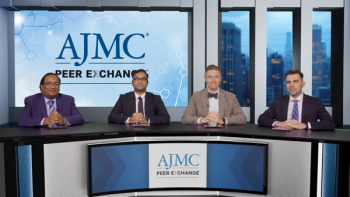
NIH Grant Terminations Disrupt 1 in 30 Clinical Trials, Impacting Over 74,000 Participants
Key Takeaways
- NIH grant terminations disrupted 3.5% of active clinical trials, affecting over 74,000 participants and resulting in a $1.81 billion funding loss.
- The National Institute of Mental Health and the National Institute on Minority Health and Health Disparities experienced the highest number of terminated grants.
Infectious disease was hit hardest by funding cuts to NIH grant for clinical trials that did not align with the Trump administration's priorities.
Approximately 1 in 30 trials were disrupted by research grant terminations at the National Institutes of Health (NIH) earlier this year, with
NIH Grant Cuts Disrupt Clinical Trials Nationwide
The researchers described clinical trials as “the principal mechanism for evaluating medical interventions,” noting that their implementation is resource-intensive and often dependent on external funding. Since President Donald Trump took office in January, his administration has made several
Between February 28 and April 8, 694 NIH grants were
The National Institute of Mental Health and the National Institute on Minority Health and Health Disparities (NIMHD) had the largest number of terminated grants (n = 128 and n = 77, respectively). At the same time, the National Institute of Allergy and Infectious Diseases and NIMHD accounted for the most terminated funding ($505,968,126 and $223,566,041, respectively). Of the 210 recipient institutions impacted, Columbia University experienced the highest number of terminations (n = 157).
Impact of Grant Terminations on Ongoing NIH-Funded Clinical Trials
To further assess how these disruptions have affected ongoing clinical trials, the researchers used NIH ExPORTER to identify all NIH-funded interventional clinical trials supported by active grants as of February 28, 2025.1 They then linked these with data from the HHS Tracking Accountability in Government Grants System to determine which grants had been terminated and obtained additional trial characteristics from the NIH clinical trial database.
Between February 28 and August 15, 11,008 NIH-funded clinical trials were active, of which 383 (3.5%) subsequently lost grant funding. At the time of termination, 36.1% (n = 140) of affected trials were completed, 34.5% (n = 134) were recruiting, 13.7% (n = 53) were not yet recruiting, 11.1% (n = 43) were active but not yet recruiting, and 3.4% (n = 13) were enrolling by invitation only.
By trial phase, disruptions ranged from 3.7% of phase 1 (60/1611) and phase 1/2 (17/461) trials to 0% for phase 2/3 studies (P < .001). Among trials classified as active but not recruiting at the time of termination, 74,311 individuals had been enrolled and may have still been receiving interventions. Median anticipated enrollment was also higher among trials with terminated funding than among those that retained funding (105 [IQR, 30-402] vs 72 [IQR, 31-220]).
Trials conducted outside the US were more likely to lose funding than US-based trials (5.8% [28/483] vs 3.4% [355/10,525]; P = .009). For US-based trials, the proportion of terminated grants varied significantly by region, from 6.3% (189/2998) in the Northeast to 0% among multiregional trials (P < .001).
Grant terminations also differed by primary purpose, with 8.4% (123/1460) of prevention trials affected vs 2.0% (16/791) of basic science trials (P < .001). By intervention type, disruptions ranged from 5.0% (177/3510) among behavioral trials to none among genetic intervention trials. Lastly, infectious disease trials were the most affected by topic area (14.4%), compared with 2.2% of neurologic (11/498) and reproductive health (48/2161) trials (P < .001).
Implications for Future Clinical Trials and Ongoing Monitoring
The researchers acknowledged several limitations, including the lack of data on reasons for termination and reliance on investigator-reported trial information. Still, they expressed confidence in their findings and emphasized the importance of continued monitoring.
“Monitoring the trajectory of clinical trials associated with terminated NIH grants is critical for determining how these disruptions will ultimately affect future trials, reliance on nonexperimental study designs, data integrity, and health care research,” the authors concluded.
References
- Patel VR, Liu M, Jena AB. Clinical trials affected by research grant terminations at the National Institutes of Health. JAMA Intern Med. Published online November 17, 2025. doi:10.1001/jamainternmed.2025.6088
- Kozlov M. NIH races to spend its 2025 grant money—but fewer projects win funding. Nature. September 29, 2025. Accessed November 17, 2025.
https://www.nature.com/articles/d41586-025-03168-4 - Santoro C. NIH grants terminated amid Trump administration, raising concerns for US research, minority health disparities. AJMC®. May 8, 2025. Accessed November 17, 2025.
https://www.ajmc.com/view/nih-grants-terminated-amid-trump-administration-raising-concerns-for-us-research-minority-health-disparities
Newsletter
Stay ahead of policy, cost, and value—subscribe to AJMC for expert insights at the intersection of clinical care and health economics.













































